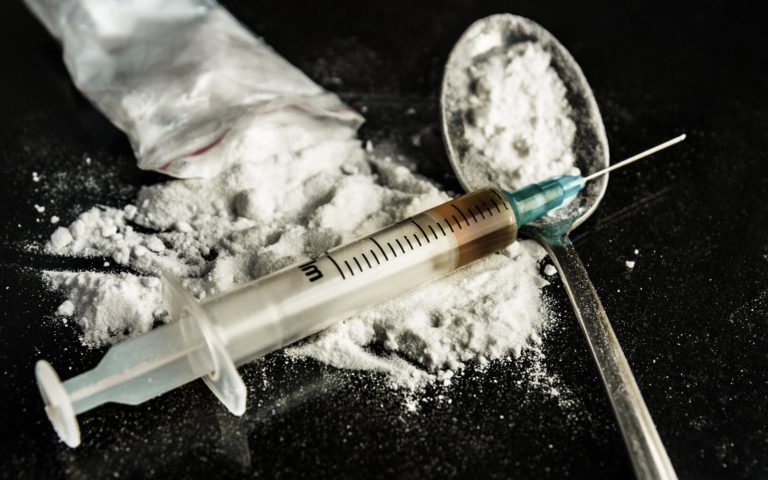Is OxyContin an upper or downer? Drugs generally fall into one of two categories: “uppers,” also known as stimulants, or “downers,” also known as depressants. Uppers are drugs that increase energy and alertness by having a stimulating effect on the central nervous system. They also raise blood pressure and heart rate. In contrast, downers have a sedative effect on the central nervous system, and thus decrease alertness and focus. Downers also slow down breathing and heart rate.
With their opposing effects, both uppers and downers can be dangerous, and abusing either can be life-threatening. Health risks associated with uppers include cardiac distress, high blood pressure, and stroke, while downers increase risk of low blood pressure and respiratory failure. To find out which classification OxyContin falls under, keep reading.
OxyContin is classified as a depressant, therefore it is a downer. Downers lower heart and breathing rate, slow reaction times, and produce drowsiness.
What is OxyContin?
OxyContin is a time-release prescription opioid painkiller that has become extremely popular. It is a brand-name variation of one of the most popular painkillers, oxycodone. What is oxycodone? It is an opiate derived from the opium poppy. It is frequently administered to patients with arthritis or cancer as well as to those with serious, chronic pain because of its time-release characteristic. It is also administered to patients with injuries. This painkiller provides long-term pain relief with a single dose that lasts up to 12 hours.
What are Uppers?
Uppers is a slang term for stimulants, a class of drugs that increase energy, alertness, and mood, as well as increases self-confidence or sexual prowess. Stimulants speed up the transmission and receipt of messages to and from the central nervous system (CNS).
The elevated activity produced by uppers is invigorating, but it consumes a lot of energy, leading to poor health in the long term. You may have noticed when you get an adrenaline rush that you feel shaky, weak, or dizzy afterward. This is similar to what drug addicts experience after their stimulants wear off. When a stimulant wears off, a user feels exhausted and depressed, triggering them to seek more uppers. This is known as a “crash.”
Taking too much of a legal stimulant like an ADHD medication can result in cardiac distress, including high blood pressure, irregular heartbeat, heart failure, or a stroke. Although stimulants can help with focus and concentration, they can be dangerous if overused. Using illicit stimulants is particularly dangerous because they are extremely powerful and have no safe levels of use.
What are Downers?
CNS depressants, which act as downers by slowing down the communication between the central nervous system and the brain, are located on the other end of the drug side effect spectrum. They make the individual feel drowsy or relaxed and are highly efficient at minimizing pain. Downers, therefore, decrease concentration and alertness.
Certain sedatives are prescribed to control seizures, anxiety, and sleep disorders, but can be extremely lethal when misused. Illegal sedatives like narcotics are never safe to take in any quantity, and are notorious for their addictive nature. Depressants interfere with central nervous system activity, including respiration and heartbeat. This can lead to dangerously low levels of oxygen in the body, resulting in comas and death. Downers pose the greatest threat of harm when abused, as they result in insufficient oxygen. When a big dose is taken, overdose and death may occur.
Is OxyContin an Upper or a Downer?
OxyContin is categorized as a downer, because it is a central nervous system depressant. OxyContin is a highly addictive prescription opioid that has been contributed by many as a key player in the United States opioid crisis.
One research study on OxyContin’s impact on public health states, “Controlled drugs, with their potential for abuse and diversion, can pose public health risks that are different from—and more problematic than—those of uncontrolled drugs when they are overpromoted and highly prescribed. An in-depth analysis of the promotion and marketing of OxyContin (Purdue Pharma, Stamford, CT), a sustained-release oxycodone preparation, illustrates some of the key issues.
When Purdue Pharma introduced OxyContin in 1996, it was aggressively marketed and highly promoted. Sales grew from $48 million in 1996 to almost $1.1 billion in 2000. The high availability of OxyContin correlated with increased abuse, diversion, and addiction, and by 2004 OxyContin had become a leading drug of abuse in the United States.”
The substance is prescribed to individuals for moderate to high pain relief, and is 1.5 times more potent than morphine. According to the National Institute on Drug Abuse, over 17,000 died from prescription opioid overdoses—including OxyContin—in 2017 alone.
Side Effects of OxyContin Abuse
Both medical professionals and those who abuse OxyContin take advantage of its time-release formula, which produces a longer-lasting high when compared to other opioids. Individuals who abuse OxyContin generally do so because they are seeking these side effects:
- Sense of euphoria
- Extreme relaxation
- Pain relief
- Anxiety reduction
- Heaviness in limbs
However, taking large quantities or frequent abuse of OxyContin can also lead to these side effects:
- Drowsiness
- Dizziness
- Constipation
- Stomach pain
- Slowed breathing
- Excessive sweating
- Low blood pressure
- Headache
- Mood changes
- Dry mouth
- Loss of coordination
- Seizures
- Unconsciousness
- Difficulty breathing
- Coma
- Death
Signs of OxyContin Addiction
When individuals begin to use OxyContin for pain relief as prescribed, there is a possibility that it can be abused. With increased usage, the body can become tolerant to the drug, causing further abuse that will inevitably lead to addiction if not stopped. Due to the drug’s potency, it is critical to be able to recognize when someone is having trouble with OxyContin addiction.
The Diagnostic and Statistical Manual of Mental Disorders has outlined indicators that can be used to diagnose OxyContin addiction. The higher the number of symptoms present, the more serious the addiction. The criteria are as follows:
- Using OxyContin in ways that pose a danger to yourself or others
- Neglecting responsibilities
- Personal or professional conflicts
- Withdrawal symptoms are experienced if use is stopped
- Developing an increasing tolerance
- Inability to quit use
- Use has caused physical or mental health issues
- Disinterest in things once enjoyed
- Intense cravings for the drug
It is possible to become addicted to OxyContin just as it is to other opioids, and the potential consequences of such an addiction could be fatal. OxyContin is accessible in two forms – a tablet or a capsule – and can be abused by orally ingesting, snorting or injecting, though newer formulations of the drug have made these methods of use more difficult. Symptoms that are specific to OxyContin Addiction May Include:
- Irritability
- Doctor shopping
- Stealing others prescriptions
- Borrowing or stealing money
- Decline in performance at work or school
- Lethargy
- Impaired motor skills
- Isolation
- Nodding off
- Lapses in memory
- Dizziness
Dangers of OxyContin Addiction
If you use OxyContin frequently and continuously, your health may suffer as a consequence. The body has a difficult time getting rid of it due to its toxicity and liver and kidney function may deteriorate as a result, leading to failure and/or liver and kidney disease. Because it is a sedative, OxyContin may also have an adverse impact on the respiratory system, resulting in respiratory issues and other health problems. Other chronic health problems, including heart disease and cardiovascular issues, may also be linked to OxyContin addiction.
The risk of an OxyContin overdose is one of the greatest health concerns when OxyContin addiction is present. Taking the prescription drug too frequently or mixing it with alcohol or other substances, for example, is a common cause of accidental drug overdoses. Even the most experienced users are vulnerable to accidental overdoses; it’s not just new users who overdose on the drug.
Patients must always assume that their regular dose will become an overdose amount as a result of changes in body chemistry, medical problems, or other complications. According to the National Institute on Drug Abuse, 16,416 individuals died from a drug overdose involving a prescription opioid in 2020 alone. This is a significant increase from the 3,442 annual deaths in the year 1999.
OxyContin Overdose
It is critical to be aware of the indications and manifestations of an overdose when taking oxycodone. Moreover, if the medication is not acquired at a drug store or from an online pharmacy, there is the potential risk of it being blended with another, more potent opioid medication. This can lead to an overdose, even with a dosage that would normally be safe. Early detection of an oxycodone overdose is critical, and getting medical attention promptly can help prevent some of the most severe repercussions. To begin with, let us discuss the symptoms of an oxycodone overdose:
- Vomiting
- Pinpoint pupils
- Weak pulse
- Shallow breathing
- Drowsiness
- Unresponsiveness
- Seizures
- Blue tint to lips and fingernails
- Unresponsiveness
- Unconsciousness
Constricted or narrowed pupils can be an early warning sign of an overdose, and the other accompanying signs can develop rapidly and become increasingly grave the longer the situation persists.
What to do in the Event of an OxyContin Overdose
Even if someone is not addicted to OxyContin, they can still overdose on it. If an OxyContin overdose is suspected, you should call for emergency services right away, because it can lead to long-term damage, severe health issues, and even death if it’s not treated promptly. Keeping the person conscious, if possible, is critical if an OxyContin overdose is suspected. If they are not conscious, they should be turned onto their side so that they do not choke if they vomit.
Be sure that the person continues to breathe properly by continuously monitoring their breathing and heart rates. If someone has stopped breathing, CPR may become necessary. Never abandon a person in distress who may have overdosed on OxyContin. The condition of someone suffering an OxyContin overdose may deteriorate rapidly. Stay with the individual until medical personnel arrive and can take over.
Knoxville Recovery Center Can Help
If you or a loved one is struggling with OxyContin addiction, it is imperative to seek professional help immediately. OxyContin abuse is very dangerous to the user if left untreated. Fortunately, help is available for those battling this addiction. Depending on the stage of an individual’s addiction, they may require detox, an intensive treatment program, or both. Fortunately, Knoxville Recovery Center offers various services to those struggling with this addiction.
Services offered:
Detox – Our on-site detox clinic accommodates and supports clients as the body sheds all residual traces of OxyContin. Clients are under medical supervision during the detox process to ensure that they remain safe and comfortable.
Addiction Treatment – During our addiction treatment program, clients will engage in introductory therapies and exercises that work to prepare them for continued, more intensive treatment outside of our facility. The goal of our addiction treatment track is to stabilize clients so that they are treatment-ready.
Mental Health Treatment – Our mental health treatment program introduces behavioral therapies rooted in self-expression and holistic exercise. Art therapy, music therapy, and yoga are just a few forms of therapy we offer at the center. Our goal is to help the client reclaim their voice and expose them to treatment within a professional facility.
Aftercare Planning – Aftercare is designed for individuals who have benefitted from our introductory addiction services and are transitioning into a more intensive addiction treatment program. Once a client is stabilized, they will be encouraged to pursue continued addiction treatment. Our experienced case managers will then work with our clients to place them in a program that addresses their specific wants and needs.
Addiction is difficult to overcome alone. If you feel that you or a loved one is struggling with OxyContin abuse, our specialists are on standby and ready to help. Call Knoxville Recovery Center and speak with an addiction expert today.











